| |
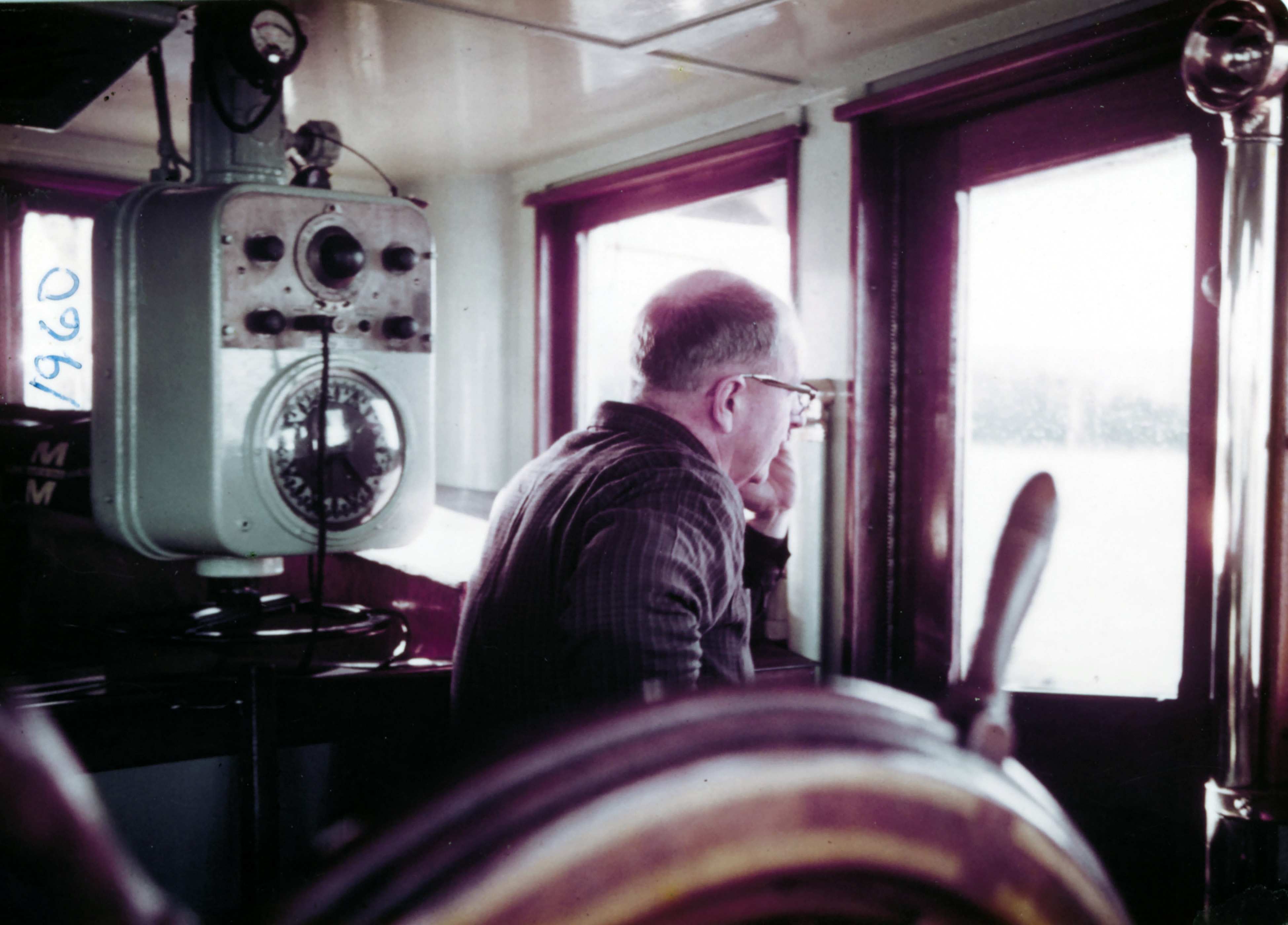 |
| |
Captain Norman Johnson in the pilot house of the tug Ludington near Chicago, Illinois, in 1960.
|
In 2018 the U.S. Army Corps of Engineers received a donation of paintings of Corps vessels (“floating plant”) painted by Norman Johnson. The subjects of Johnson’s paintings had a special meaning to him – they were vessels that his father, also named Norman Johnson, had served with or on either as crew or as master (captain). Along with the paintings came a small stack of photos and documents from his father’s Corps of Engineers career. Further research revealed a fascinating story of the elder Mr. Johnson’s employment as well as the vessel on which he spent much of his career.
During World War II the U.S. Army needed oceangoing tugboats, designated Large Tugs (LT), to assist with overseas operations. Jakobson Shipyard in Oyster Bay, New York, built one of these tugs, LT 4, and delivered it to the U.S. Army Quartermaster Corps in June 1943. The Quartermasters named it Major Wilbur F. Browder. A service vessel not intended for combat, it was lightly armed with two machine guns for defense against air attack. As an oceangoing vessel, it was 115 feet long with a 26-foot beam and 14-foot 3-inch draft. In Army Quartermaster service it had a crew of 24.
The Major Wilbur F. Browder’s first assignment after crossing the Atlantic was ferrying ammunition to France from England in towed barges shortly after the D-Day invasion on June 6, 1944. The next assignment was clearing the harbor at Cherbourg, France, to return the port to operation and thus enable supplies to reach the Allied armies in Europe. The tug finished its war service at the Port of Plymouth, England.
The elder Norman Johnson was born in 1909 in Sawyer, Wisconsin, not far from Lake Superior, and grew up in and around the lake. According to a blog post about the history of Kewaunee County, Wisconsin, Johnson got a job in 1932 with the Corps of Engineers shoveling coal. During the Depression, nearly any job was a good job. He remained with the Corps through the war and in 1946, by then an experienced vessel crewman, the Corps of Engineers sent him to Charleston, South Carolina, to pick up a seagoing tugboat it had just acquired. This was the Major Wilbur F. Browder, no longer needed by the Army for transporting ammunition or clearing war-damaged harbors. Johnson and five men took the tug from Charleston to Kewaunee, Wisconsin, from where it would operate during its entire 50-year Corps career. The Major Wilbur F. Browder, now painted in Corps of Engineers colors of light yellow, red, and black and with the familiar red castle on its stack, became the Ludington, named after the Lake Michigan port city, and its crew reduced to 14.
 |
|
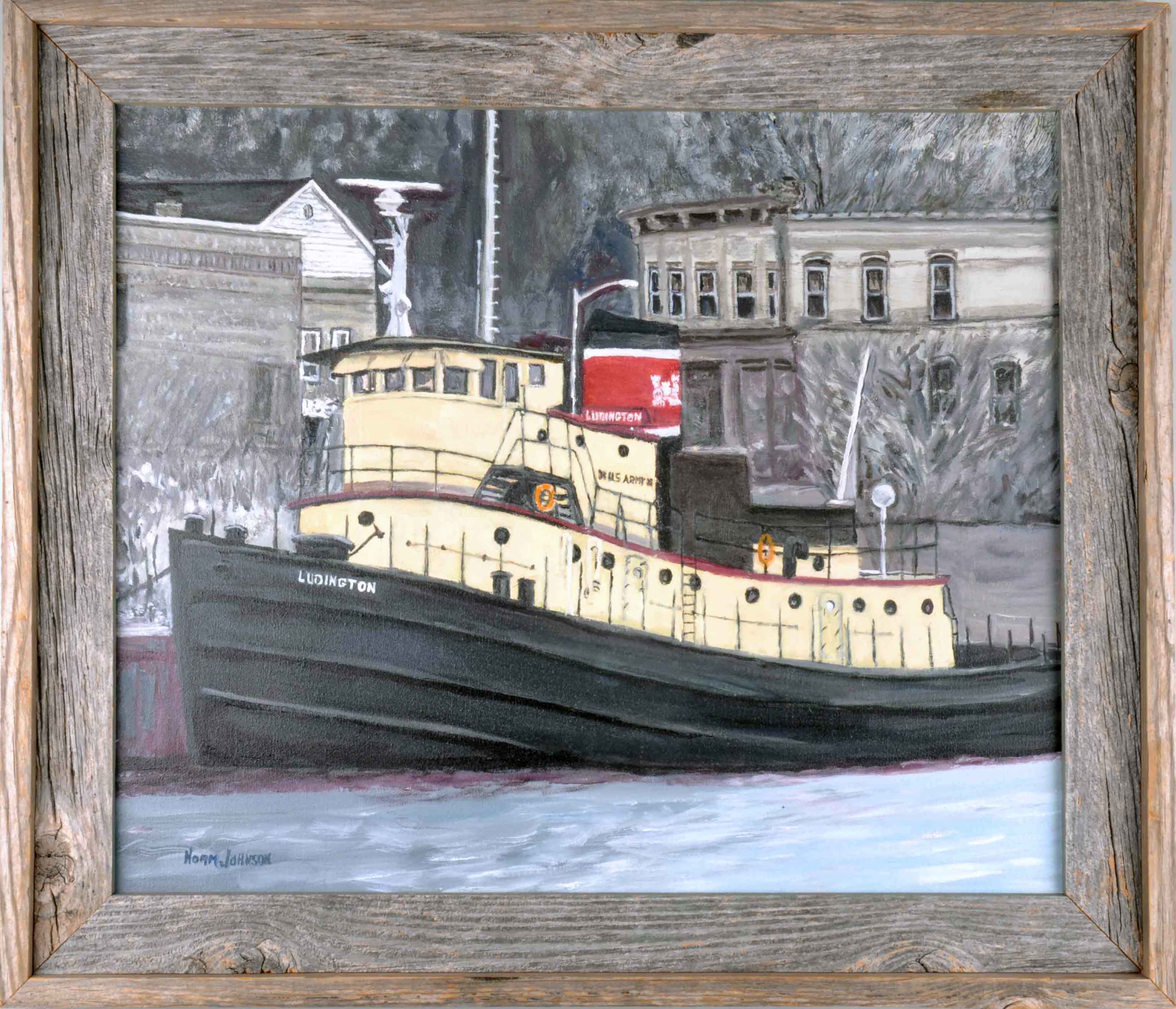 |
|
 |
|
“Tug Two Rivers,” oil-on-hardboard painting. Norman Johnson was a crew member of this tug before becoming master of the Ludington in 1950.
|
|
“Seagoing WWII Tug,” oil-on-canvas painting of the tug Ludington moored at Kewaunee, Wisconsin. Johnson painted the harbor background as it would have appeared.
|
|
“Rip-rap Placement," oil-on-canvas painting showing the tug Ludington and the crane barge Milwaukee placing rip rap stone at the Chicago piers.
|
| |
|
|
|
|
In 1947 the Corps’ Milwaukee District assigned the Ludington to the dredge Kewaunee, which was dredging harbors at the City of Kewaunee and elsewhere on the Great Lakes. Around this time, Johnson moved to the crew of another new Corps of Engineers tug, the Two Rivers, which was also assisting with dredging in the area. Both tugs regularly worked the ports of the Great Lakes, performing regular maintenance dredging with the dredges Kewaunee and Haines as well as breakwater and construction projects. In 1950 the captain of the Ludington retired, and Norman Johnson became the new master.
The life of a Corps of Engineers floating plant crew was a unique one. The crew lived together on the vessel, in close contact with each other and the crews of other vessels assigned to the same project. For long periods of time, contact with their families was limited to the mail and an occasional long-distance phone call. Moreover, the nature of the work to keep harbors open and functioning meant that sometimes projects, and destinations, could change on very short notice, and disruptions to planned outings ashore to see family were frequent. The only thing that could be counted on was the winter hiatus when the Great Lakes froze over, putting a halt to shipping and harbor maintenance.
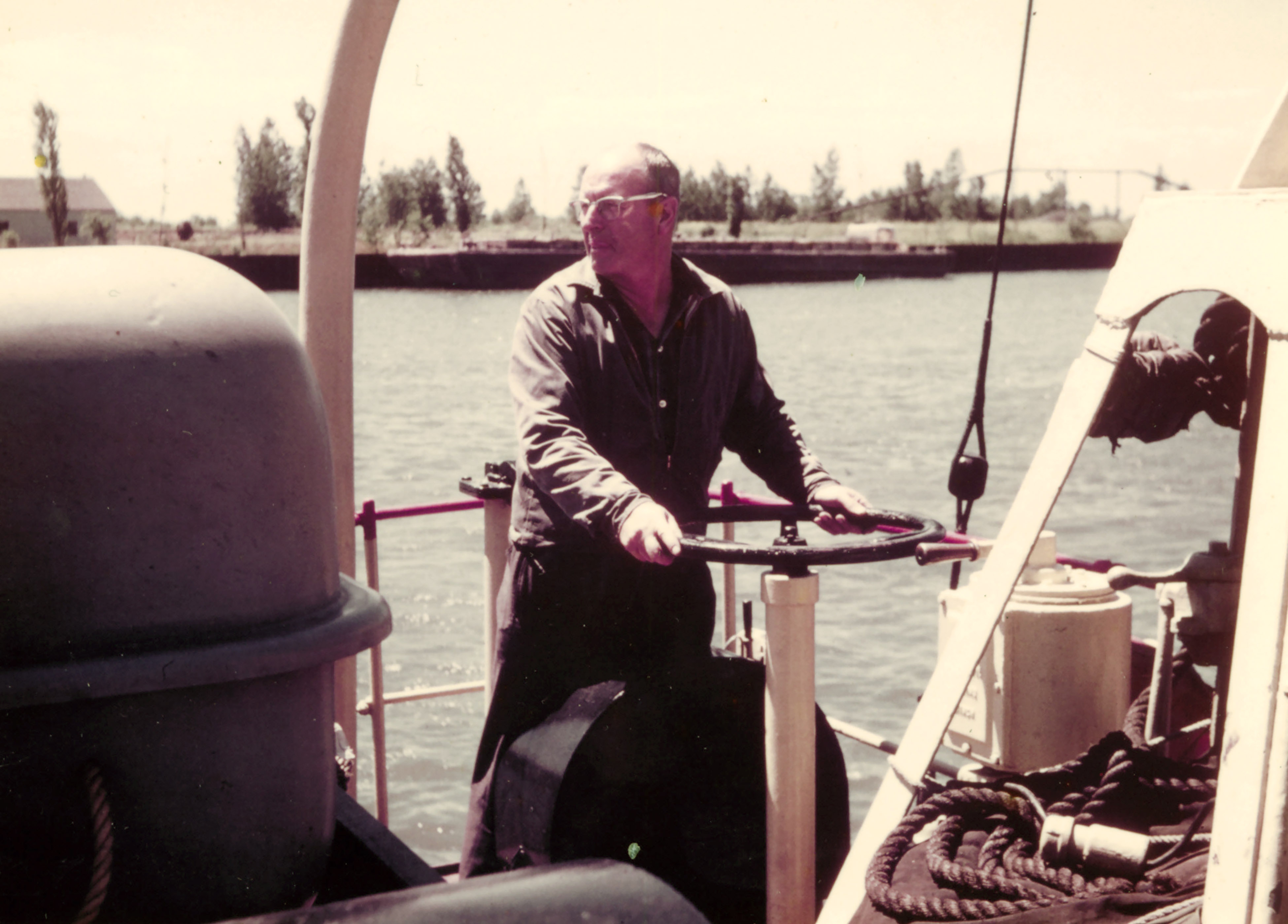 |
|
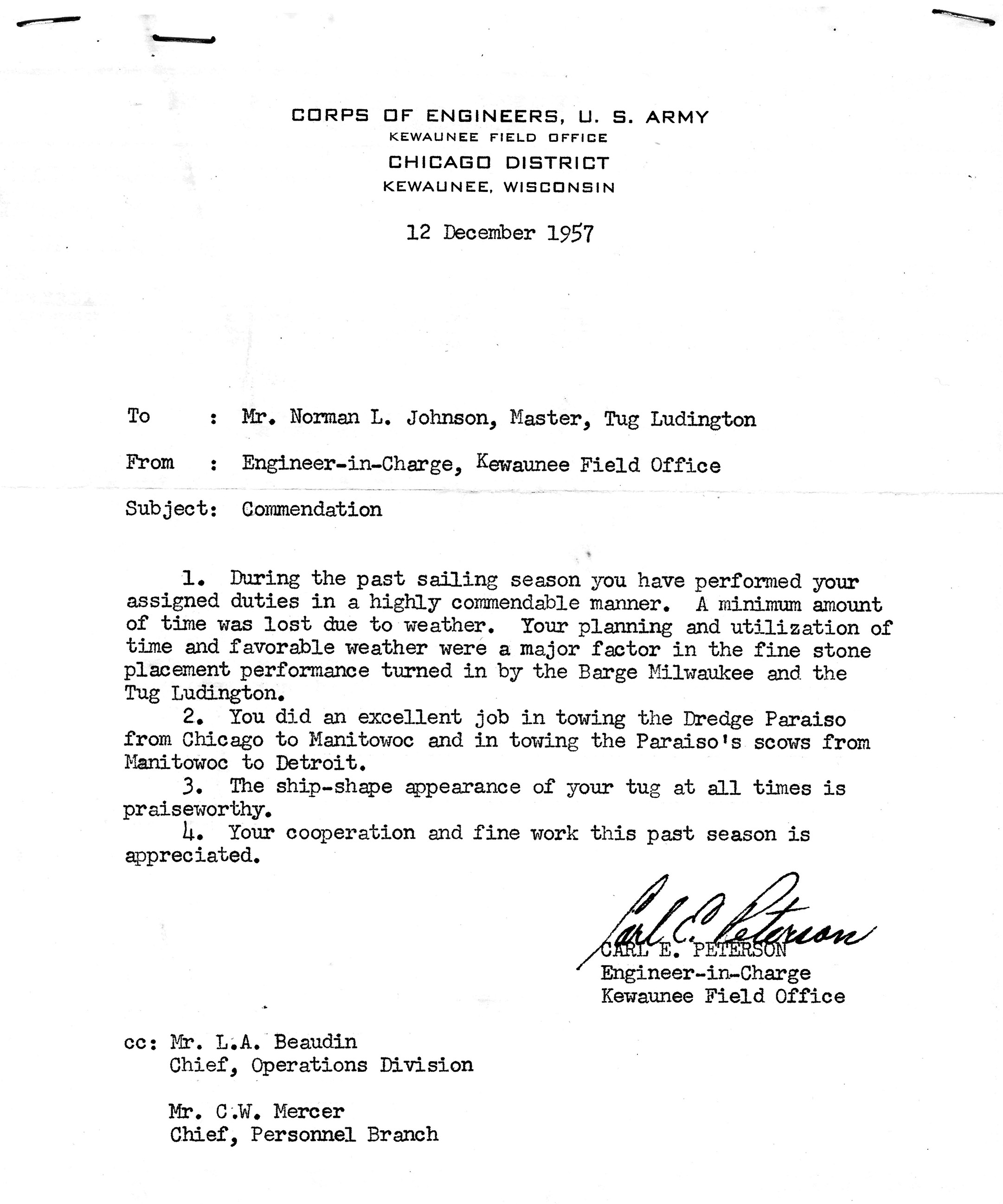 |
|
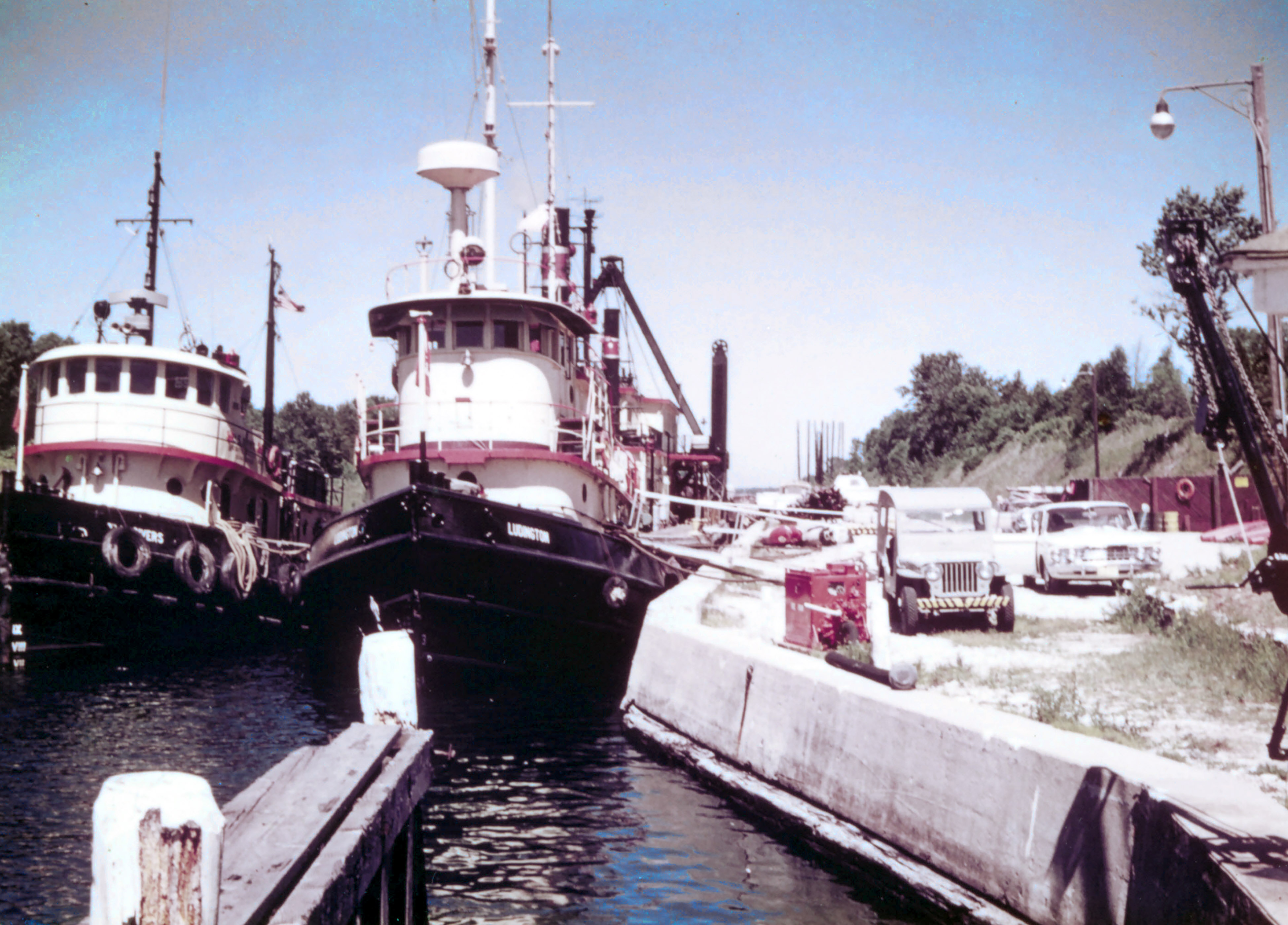 |
|
Captain Norman Johnson at the steam control of the tug Ludington in 1962.
|
|
Norman Johnson received this commendation letter for his work during the 1957 shipping season on the Great Lakes.
|
|
The tug Ludington, tug Two Rivers, and dredge Kewaunee at Sturgeon Bay Canal in 1954. This canal, maintained by the U.S. Army Corps of Engineers, connects Green Bay to Lake Michigan.
|
Norman Johnson spent 14 years as master of the Ludington, retiring in 1964. Chief of Engineers Walter K. Wilson noted Johnson’s retirement in a letter of appreciation, and a congratulatory letter from his supervisor stated “it wasn’t going to be easy” to fill his job.
The Ludington continued to work the Great Lakes until 1995, when the Corps of Engineers declared it surplus federal property. The City of Kewaunee acquired it the following year, and it now serves as a city-owned public museum. In 2002 the Secretary of the Interior placed the vessel on the National and State Register of Historic Places.
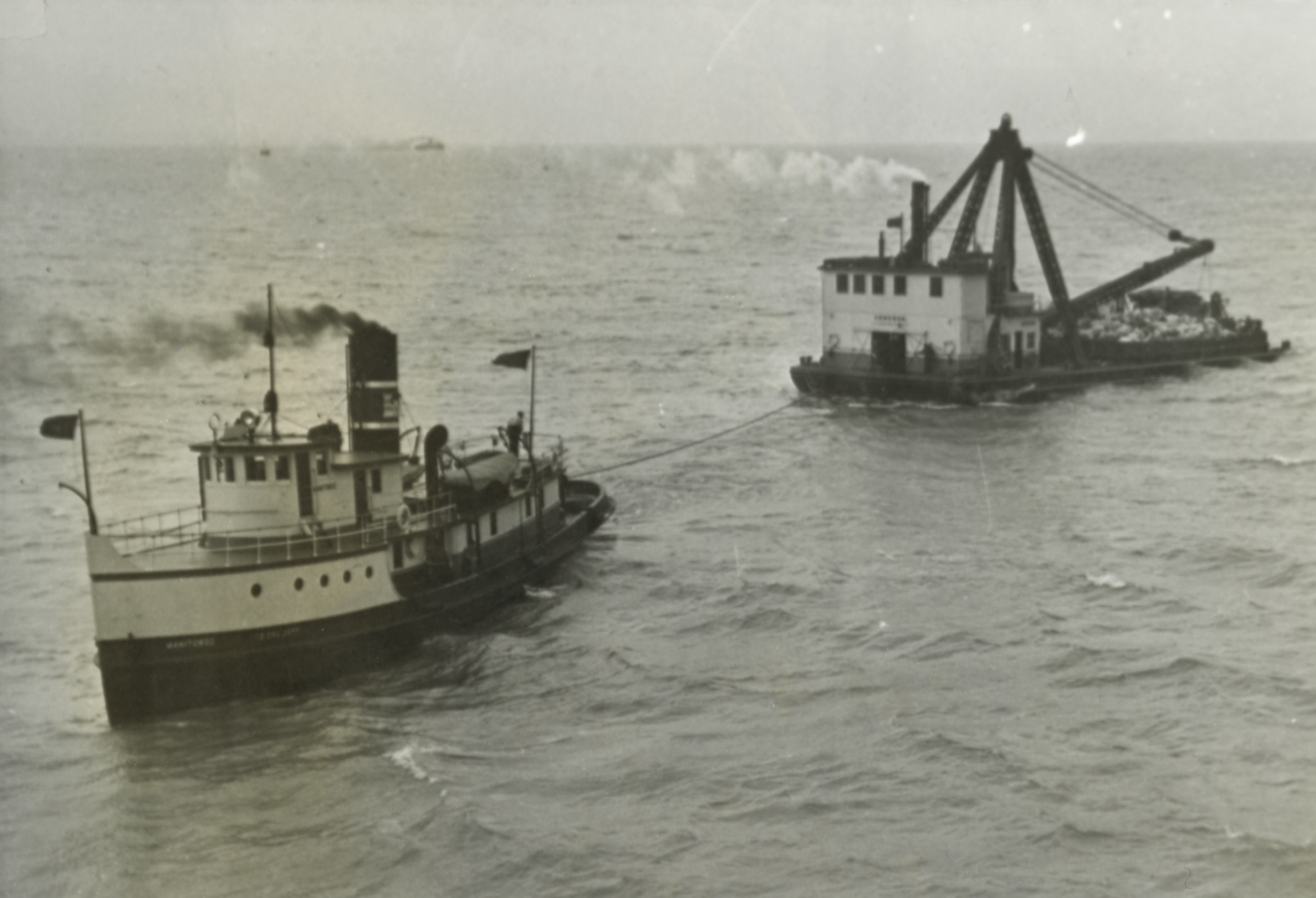 |
|
Undated image of the tug Ludington with the dredge Manitowoc, somewhere on the Great Lakes.
|
| |
|
|
|
|
|
|
| |
|
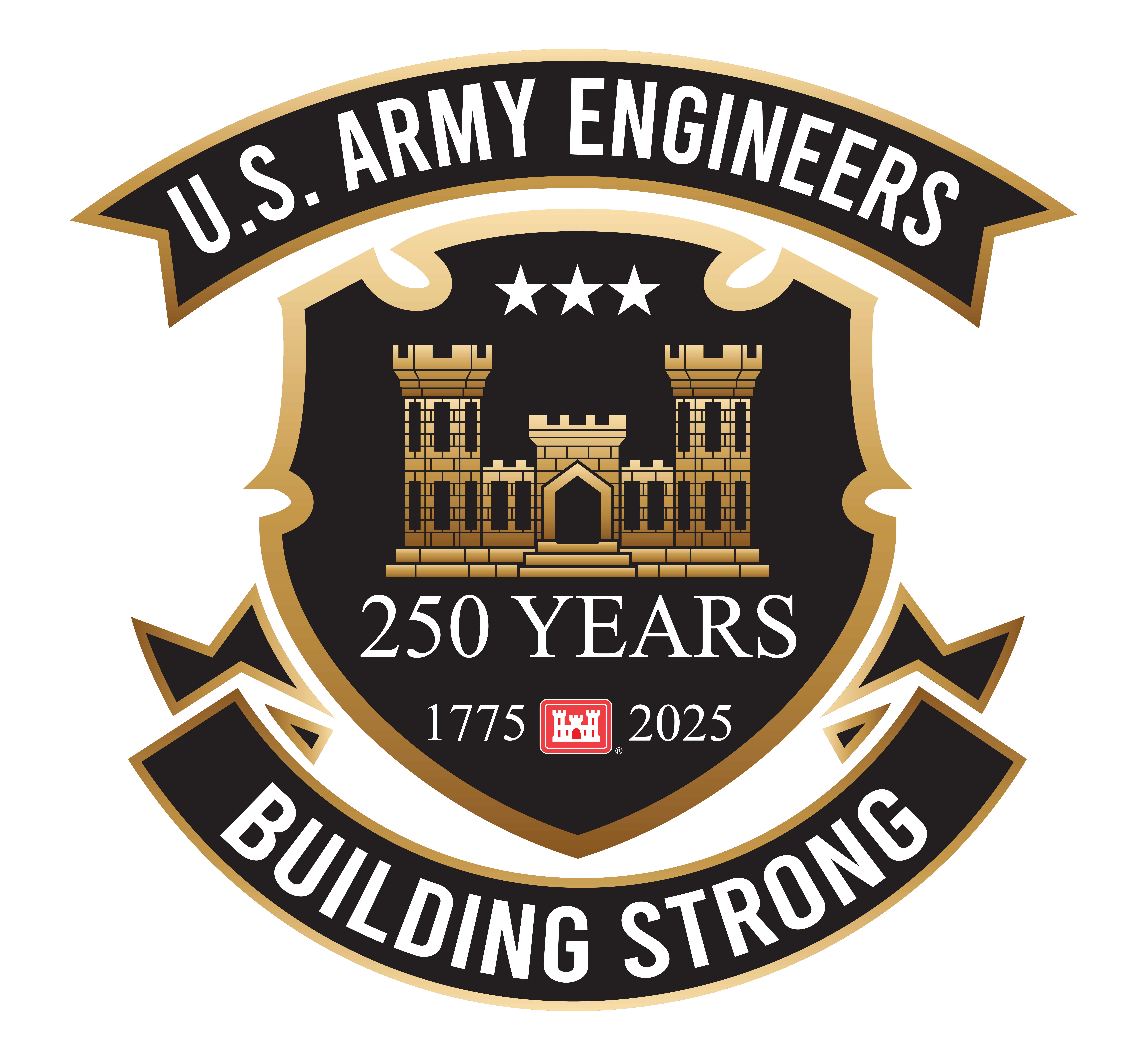 |
250th Anniversary
March 2025. No. 04. |
|
|
|
| |
|
|
|
|
|
|
Sources:
Norman L. Johnson Collection, Office of History, HQ, U.S. Army Corps of Engineers.
Kewaunee County History https://kewauneecountyhistory.blogspot.com/2016/05/from-normandy-to-kewaunee-tug-ludington.html accessed 19 April 2021.
Thanks to the staff of the United States Army Transportation Museum, Ft. Eustis, Va.
|